How To Repair Nike Air Max 2017
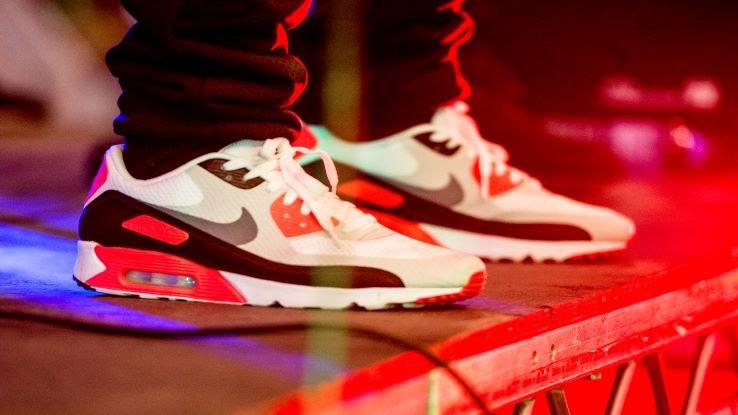
With the rise of fashion trends like athleisure and the special editions, limited releases and new colorways that keep sneakerheads in a frenzy, athletic shoes are in like never earlier. And why not? Later on all, they're functional and comfortable, and they become with pretty much whatever casual outfit. When it comes to brands, notwithstanding, it seems that Nike long ago unlocked the key to producing sneakers that never get out of style. Able-bodied footwear wouldn't be what it is today without this company, and consumers tin't seem to get enough.
Case in betoken? Recently, a pair of Nike Air Jordan 1 High shoes in one case worn by Michael Hashemite kingdom of jordan went for $615,000, officially making them the most expensive pair of sneakers ever sold at an sale. Most Nike shoe styles, including the newer Nike Air Max 90, routinely retail for over $100 per pair in stores and online. So what is it virtually Nike that seems to go on this company and its gear so firmly positioned at the top of the footwear food chain? Information technology turns out a blend of dissimilar decisions helped Nike secure its identify on the sportswear throne.
The Company Beefed Upwards Performance Features Early on
Nike executives realized early on that creating a great brand starts with designing an incredible production — one that has practical uses for its target audience. Marketing can just become so far, and if a product doesn't work as advertised, consumers won't put their trust in the brand. This principle explains why, since the outset, Nike has focused on creating shoes with innovative features that help athletes perform better.
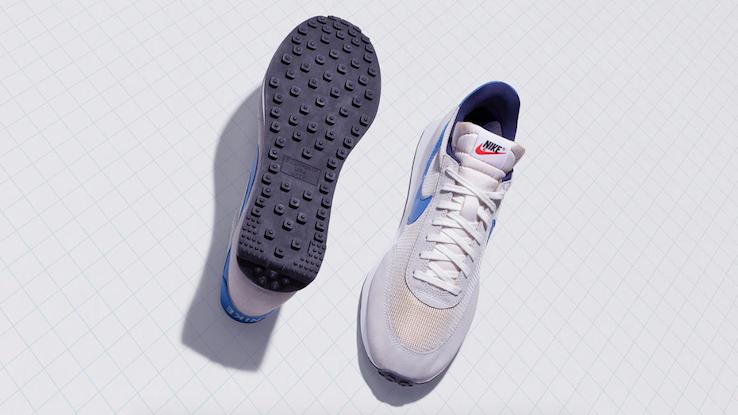
The same technology currently used in the Nike Air Max 90 outset debuted back in 1978. That was the year that Nike initially produced the Air Tailwind, the first sneaker e'er to feature Nike's now-famous Air Engineering science. Inspired by quondam NASA engineer Frank Rudy, Air Technology involves encapsulating flexible sacs of compressed air into sneaker soles for cushioning.
The idea turned out to be a revolutionary one, as air-pocketed soles made Nike's shoes much more lightweight — and thus easier for athletes to motion around in — than competitors' shoes without sacrificing foot support and comfort. Rather than simply marketing their shoes to athletes, Nike has a history of developing products that aim to actually amend athletic operation.
Co-ordinate to an article past Venkat Ramaswamy, Marketing Professor at the University of Michigan, Ann Arbor, ane of Nike's near successful strategies is to "co-create value," meaning it actively seeks to connect with and get first-manus feedback from customers to build their trust and design products that meet their needs. Consumers have the hazard to explain which performance features are most helpful, in turn giving Nike the opportunity to refine those features. Not only does this help the brand build superior products, but it also creates a sense of conviction and community among its buyers.
Equally it turned out, Air Engineering impressed not but athletes but pretty much anybody else, too. By using air-filled soles in everything from sports-specific shoes to everyday lifestyle footwear, Nike has go famous for giving anyone the hazard to walk on air. This effectively put its marketing coin where its oral fissure was past helping the company produce shoes that give real results.
Whether you consistently purchase Nike sneakers or not, odds are that you lot're familiar with its marketing. That's because Nike is ane of the few brands producing ads that are less focused on the coin-product exchange and more focused on jubilant the target audience'south love of sports. In an interview with the Harvard Business Review, Nike co-founder Phil Knight explained, "Our advertising tries to link consumers to the Nike make through the emotions of sports and fettle. Nosotros show competition, determination, accomplishment, fun and even the spiritual rewards of participating in those activities."
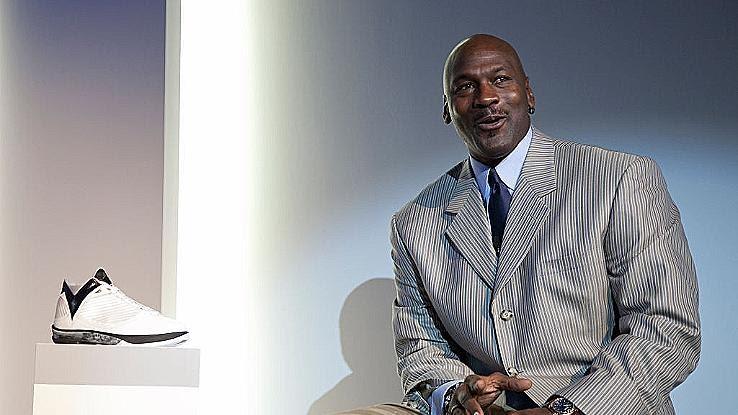
Knight went on to explain that this was the strategy behind the make's history of aligning itself with top athletes. "Sports is at the centre of American culture, so a lot of emotion already exists around it," Knight said. "Emotions are always hard to explain, but there'southward something inspirational most watching athletes push the limits of performance. You lot can't explicate much in lx seconds, but when you testify Michael Hashemite kingdom of jordan, you don't accept to. People already know a lot about him. Information technology's that elementary." The visual imagery of triumph, of overcoming obstacles and of power resonates with consumers and makes them feel deeper emotions, and they associate that emotional connexion with Nike's products in turn.
It's worth mentioning that seeing a professional person athlete stand behind a given brand is also a very fast fashion to found the brand's credibility. Information technology's difficult to imagine our favorite players attaching their names to a product that doesn't live up to its hype. If a shoe is practiced enough for Michael Jordan, who are we to debate?
Nike Adopts "Category Offense" equally a Marketing Model
Despite years of success, Nike began seeing its sales flatten out somewhat back in 2008. That's when the company's and so-newly appointed CEO, Marking Palmer, stepped up to the plate with a brilliant new business model: a strategy called "category offense." This involved restructuring the ways the brand developed and marketed different types of products. Previously, Nike had grouped its products into wide full general categories, such as footwear, apparel and accessories.
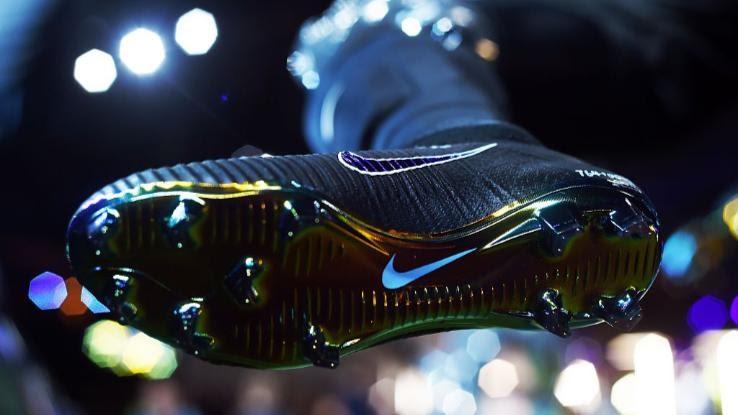
With category law-breaking, nevertheless, Nike began organizing products into sport-specific categories. Past dividing products into categories such every bit basketball game, running and football game, each sectionalisation of the company became far more than focused on the individual needs of specific types of athletes and what their sports could benefit from in terms of footwear features. This specialization was too another fashion to focus on boosting functioning.
To say that the strategy worked is a massive understatement: Nike enjoyed a 70% increase in sales by 2016. In 2017, Nike took things a stride further by announcing its new Consumer Direct Crime, which was designed to use digital technology to connect the company even more directly with its consumers. "The futurity of sport will be decided past the company that obsesses the needs of the evolving consumer," said Marking Parker, Nike's then-Chairman, President and CEO. "Through the Consumer Direct Offense, nosotros're getting fifty-fifty more ambitious in the digital market, targeting key markets and delivering production faster than always."
Sneakerheads, Hypebeasts, and Footwear Nostalgia
As the Air Max gracefully ages into its third decade, classic sneakers like the Air Max 90, Jordan ane, and the Nike Dunk continue to attract fans of all age groups. Some folks love seeing a shoe that they grew upward with, and that pair of sneakers can remind them of a different era.
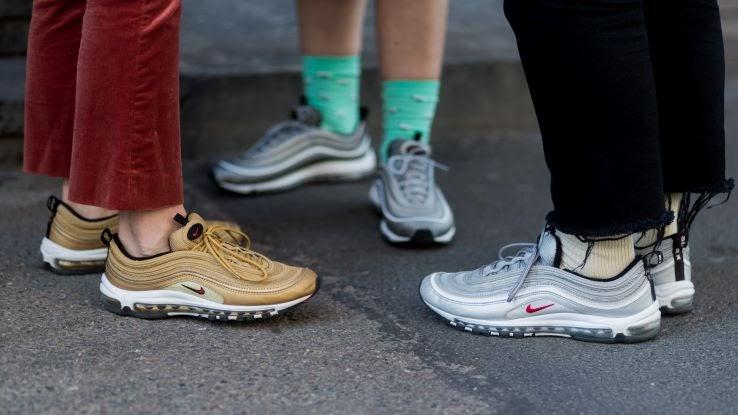
Younger folks see some of these shoes and love how information technology transports them to a different time, in the same way a poodle brim might invoke the 1950s or a tye-dye shirt tin invoke the 1960s. Nike even has a line of sneakers chosen Retro in their Jordan make as a event of this. If Hollywood can remake movies and shows, Nike can remake shoes. The Air Max 90, for example, has been released in over 100 colorways.
For some, footwear is more than a part of their outfit, it's a way of life. Nike has been instrumental in amalgam that culture through its innovative marketing, technological advancement, and various entreatment. The term 'sneakerhead' can be applied to those who collect shoes, oftentimes vintage footwear and other coveted sneakers. Many of these designer sneakers remain boxed and in closets because wearing them can devalue the product the same fashion dog ears and rips devalue classic comic books.
With limited releases, celebrity endorsements, collaborations, and other intense marketing, the sneakerhead culture can exist competitive. Some folks will look in lines outside stores for a chance at, as some say, 'copping a pair.' Members of the community receive criticism for their passion at times. The term "hypebeast" refers to someone who is more than excited about a trend and the excitement around information technology than they are to wear the shoe itself.
The Make Makes a High Fashion Foray
These days, spotting a pair of Nikes on a fashion runway is no longer the shocker it might have been fifty-fifty a decade or 2 ago. Nike is now considered a way label with some prestige in its own right, fifty-fifty though this was never a goal the visitor set out to achieve.
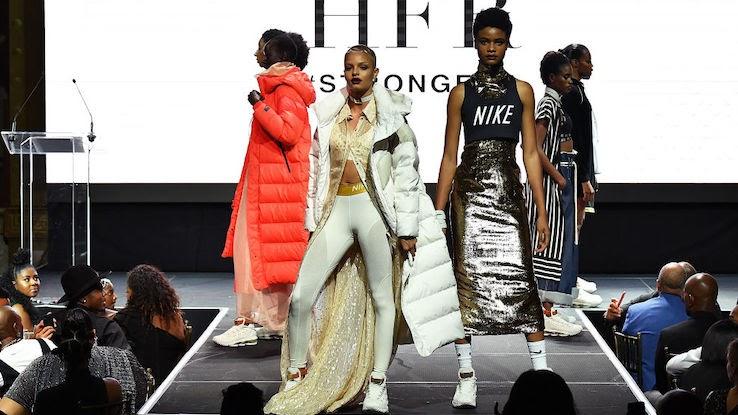
By connecting with culture on such an emotional level, it should perhaps come up as no surprise that Nike has managed to garner millions of diehard fans over the years. When some of those fans entered the fashion world, it just made sense that they'd bring their favorite shoes along for the ride. As Cam Wolf at GQ put it, "A generation of new guard designers who grew upward obsessing over Nikes accept come of age and are at present lovingly crafting the shoes in their image. And the electric current civilisation prefers to clothes for the everyday in perfect-with-sneakers sweats and hoodies." It seems merely natural, then, that Nike fits in everywhere from the runway to the sidewalk to the basketball court.
While Nike still insists that its main focus is developing technology geared towards empowering its customers, a niggling high fashion recognition certainly hasn't hurt. As way and culture go on to become more entwined, information technology seems fitting to include a sneaker brand that'southward been tapping into pop civilization for decades. And if that shoe fits, why not wear it?
Source: https://www.ask.com/culture/history-of-nike?utm_content=params%3Ao%3D740004%26ad%3DdirN%26qo%3DserpIndex
Posted by: ouelletteglikeels.blogspot.com


0 Response to "How To Repair Nike Air Max 2017"
Post a Comment